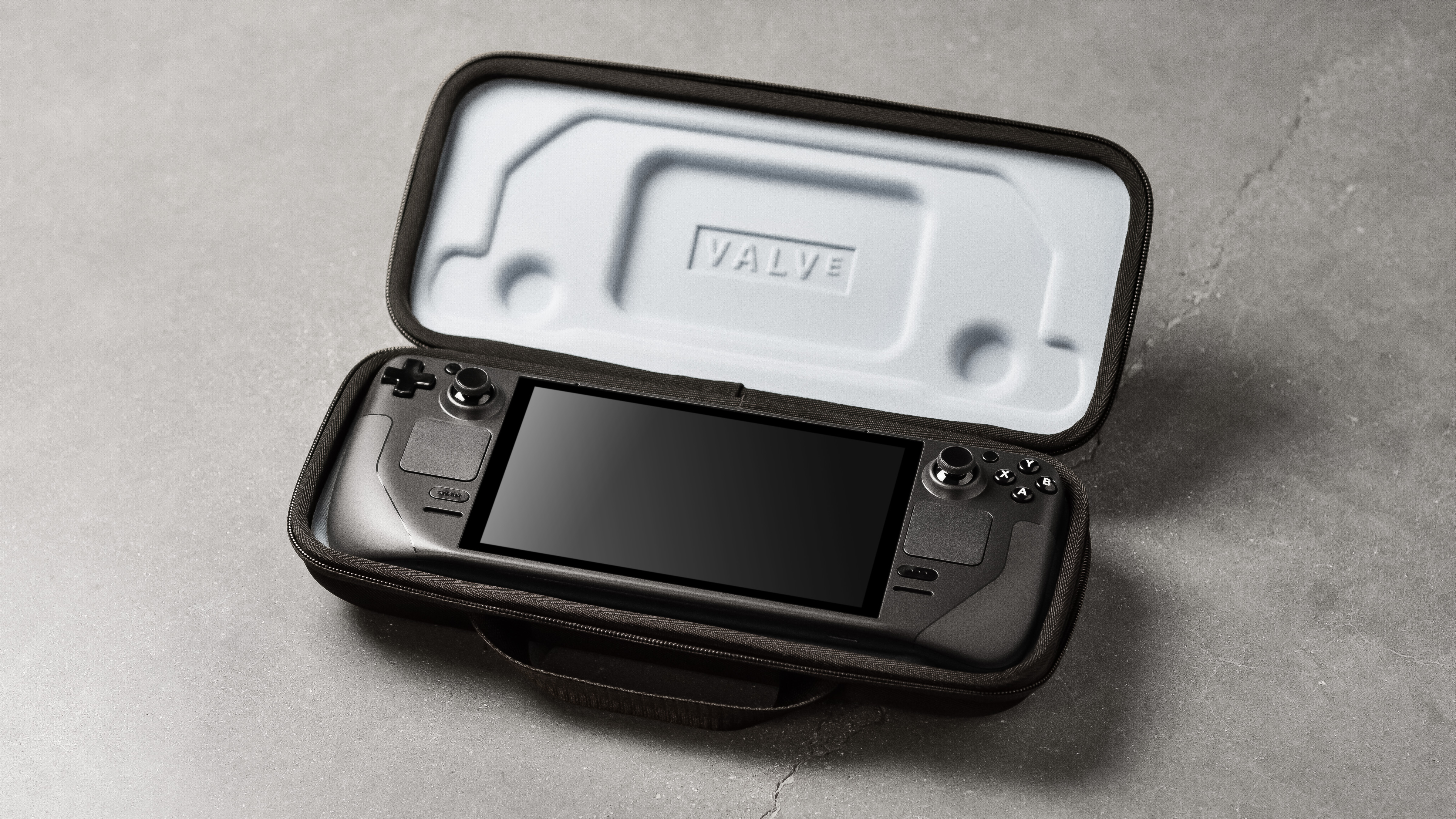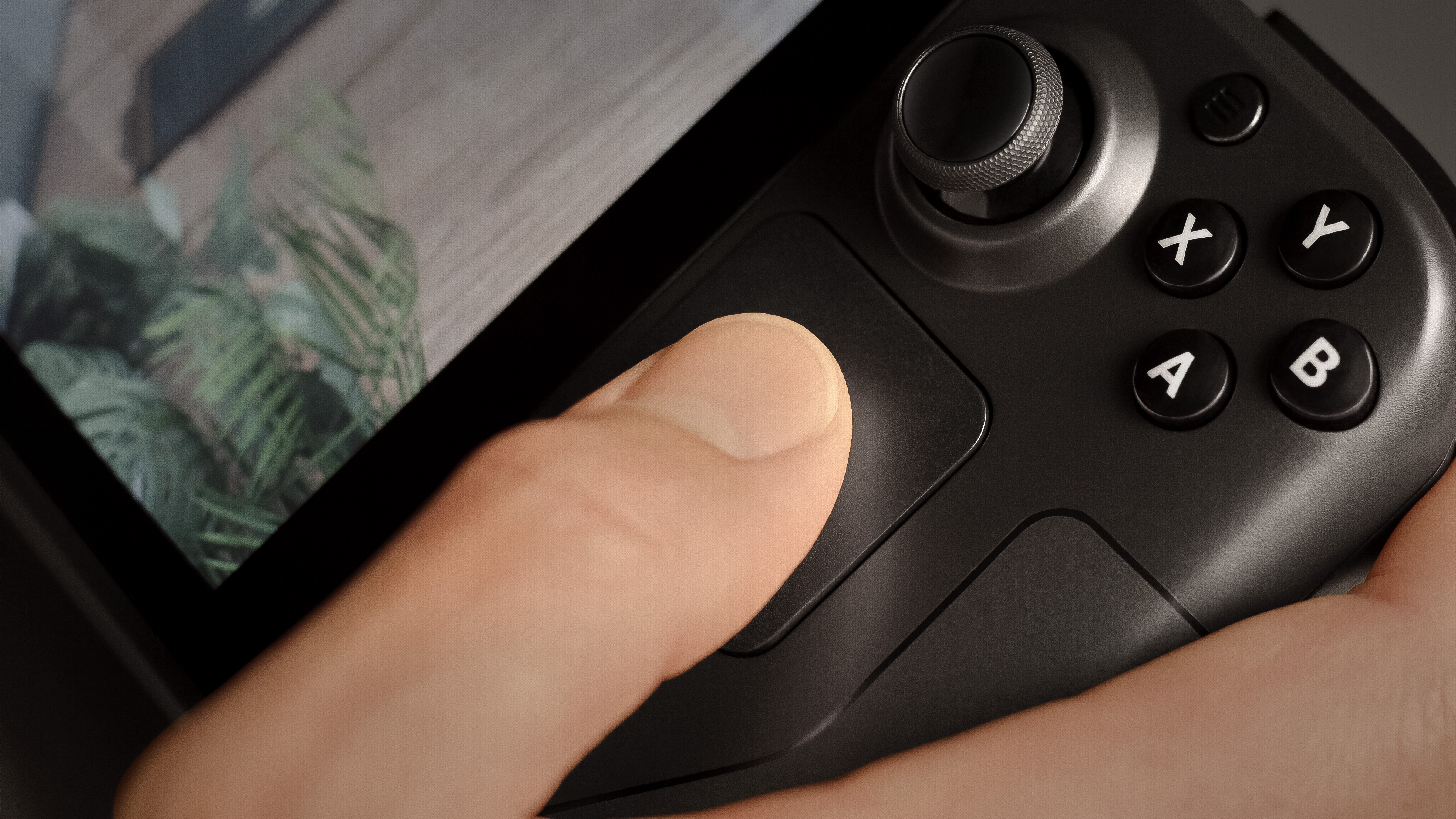Steam Deck: what sort of gaming performance can we expect from Valve's handheld PC? | PC Gamer - morrisfromeannown
Steam clean Pack of cards: what class of play performance prat we expect from Valve's handheld PC?

It's been less than 24 hours since Valve proclaimed the Steam clean Bedight, but what a busy period of time it has been. The Microcomputer play handheld has made quite a stir online and has already worked its magic on some members of the team as they see to ditch their Nintendo Switch. But the first question on my mind when I heard Valve's portable plan was in regards to technical school specs: What is going on under the goon to make this happen? So therewith in bear in mind, let's dive into the Steam Deck's silicon core to assure what's going on and how it might compare to now's components.
What powers the Steam Deck hasn't been ripped directly out of Gabe Newell's imagination. As an alternative, it's built by a company that's, tell, a little intimately-known in the gaming industry today: AMD.
The AMD processor explained
The Steam Deck APU (AMD's term for a Central processing unit/GPU combo) uses AMD's Pane 2 Central processing unit computer architecture and RDNA 2 GPU architecture. What this means is that the central processor component is correspondent to AMD Ryzen 3000-series processors happening background (introduced in 2019), while the GPU component is a match for the Radeon RX 6000-series graphics architecture (introduced in 2020).
We do have to be a pocket-sized careful with much comparisons, yet. There are no chips which are the exact mirror-visualize of the APU found in the Steam clean Deck today. Desktop counterparts, such as the Radeon RX 6700 Crosstalk graphics card, have many more cores inside them than the Steam Coldcock can offer. Likewise, the Xbox Series X/S and PS5 utilise the exact same CPU and GPU architecture, although once again are long from a match numbers-Stephen Samuel Wise.
There's no direct apples to apples comparison hither.

The Steam Deck features a four-core/eighter-thread Zen 2 Processor. That's roughly equivalent to the Ryzen 3 3100 CPU (a $99 budget desktop CPU), although the Steam Deck CPU runs a touch slower at 2.4-3.5GHz. That's likely a act up to keep this break off inside a fairly restrictive world power gasbag, thus extending battery life and minimising thermal need—the whole AMD APU in the Steamer Dump requires just 4-15W of power.
Then on that point's the GPU component part; the main driver for the gaming experience on the handheld. This is formed past eight RDNA 2 Compute Units (CUs), making for 512 cores in total. The RDNA 2 architecture substance each of these CUs will be accompanied aside an RT Core, which bequeath nominally allow for electron beam tracing acceleration. Nonetheless, such a slenderize number really won't establish for a great know in any ray-traced game.
This RDNA 2 GPU will run at 1–1.6GHz and deliver up to 1.6 TFlops FP32 performance. That is a general mark of this chip's compute performance, but again isn't completely comparable with older or competitory GPU generations. It's more of a guidepost, let's say. To get a better gumption of how the Steam clean Deck will perform, we have to look at the early glasses, too.
The full Steam Deck specs
To get a more all-out idea of how the Steam Deck volition perform, we need to look at what other is inside of it, peculiarly the fancy new LPDDR5 memory, the subject of the next section.
| Steamer Deck | |
|---|---|
| CPU | AMD Zen 2 |
| Effect count | 4-gist/8-thread |
| CPU time quicken | 2.4–3.5GHz |
| GPU | AMD RDNA 2 |
| GPU Compute Units | 8 |
| GPU clock speed up | 1–1.6GHz |
| RAM | 16GB LPDDR5 @ 5,500MT/s |
| Storage | 64GB eMMC / 256GB NVMe SSD / 512GB NVMe SSD |
| Expose | 7-inch LCD touch screen |
| Resolution | 1280 x 800 |
| Refresh rank | 60Hz |
| Audio | Stereoscopic photograph speakers, 3.5mm jacklight, dual mics, USB Type-C/Bluetooth |
| Connectivity | Wisconsin-Fi, Bluetooth, USB Eccentric-C with DisplayPort 1.4 endorse |
| Barrage | 40Whr |
| Size | 11.7 x 4.6 x 1.8-in (298 x 117 x 49mm) |
| Burthen | Approximately 1.47 lbs (669 grams) |
| Price | $399 (64GB) / $529 (256GB) / $649 (512GB) |
The LPDDR5 Pound explained
Connecting all the silicon together is 16GB of LPDDR5 RAM at 5,500MT/s. This new memory standard is quick, and outpaces most DDR4 storage found in modern gaming PCs. While DDR5 testament offer an even greater leaping in performance, the lower-power wandering LPDDR5 memory still offers tremendous speeds.
Valve is offering a happy blend of speed and capacity in the Steam Deck, but that LPDDR5 memory is a trifle of a wildcard. It's fast and at that place's plenty of it, but it's also going away to be divided between CPU and GPU and cannot offer the bandwidth that nontextual matter-limited GDDR6 memory can, which you'd find on whatsoever modern discrete graphics tease in laptop or screen background. Or, perhaps more significantly, in any console running a similar APU.

Steam Deck public presentation: the existent expectations
With the general specifications in hand, we can at least begin to generalise rough performance figures for Valve's New device—bearing in mind everything I just aforementioned about this not being a perfect science.
In terms of TFlops, the RDNA 2 chip inside the Steamer Deck is a match for Intel's 96 EU Xe graphics, which is most commonly found inside Intel Tiger Lake mobile processors. Intel's GPU offers between 1.7 and 2.1 TFlops of FP32 performance, so a touch higher than the RDNA 2 chip in the Steam clean Deck, but it's worth mentioning that the RDNA 2 architecture is reinforced most importantly for gaming and has shown itself plenty equal to of to a higher degree making up for raw compute power when it comes to framing rates.
If you're happy to run your games connected down to intermediate settings at 720p to reach 30-60 fps, then the Deck should deliver.
Lucky for us, we've non only tested Intel Tiger Lake's 96 EU iGPU, our ain Alan Dextral has taken aforementioned GPU for a spin in other PC gaming handheld, the One-netbook Onexplayer.
The Onexplayer besides comes with a quaternion-core CPU with up to eight duds, 16GB of slower DDR4 RAM, and that 96 EU Intel Xe GPU. Sol it's as good a match-up as we're going to get.
The Onexplayer manages to offer 35 fps in Phantom of the Tomb Raider at 720p and with low graphics settings. In GTA V, that increases capable 60 FPS, which isn't too stinky at complete. Alan reports further succeeder in games much as Dirt Rally, Forza Horizon 4, and devalued-impact games much as Hearthstone or Magic The Assembly: Arena.
Cyberpunk 2077 was, of course, out of the question.
Cardinal issue Alan notes in his Onexplayer review might also be something we encounter with the Steam Deck, and that's getting games to run at the native 1280 x 800 resolution, or 16:10 face ratio. It's far more belik for games to support a 16:9 720p resolution, and you may happen games track down that little flake fitter at that size, too.
Conclusion
More nebulous concepts of performance would say this is roughly same to the PS4 operating theater Xbox One, although that's a slightly more difficult comparison as console table games don't often offer frame rate counters and the like. In terms of raw Cu count, the Steam Deck is just under half the stipulation of the Xbox Serial publication S, although, again, there are all sorts of memory and other fine arts changes you'd need to take to say anything of value on that point.
To lie with anything for sure, we'll have to mystify a Steam Adorn to benchmark for ourselves (we're working on information technology). A specs list righteous can't establish US the whole picture, but we can say a few things pretty confidently. Is the Steam Coldcock going to compaction in the latest games? No. Is it going to drive the Valve Index in VR? None. Is information technology potentially a eager way to wreak PC games in bed or on the train? Hell yeah, it looks like it.
The Steam Deck isn't quite the "human dynamo" Valve claims it to be, but if you'atomic number 75 felicitous to run your games on low to medium settings at 720p to hit 30-60 Federal Protective Service, so it should stimulate you blithely acting PC games away from your desk—at least while the 40Whr battery lasts.
Source: https://www.pcgamer.com/steam-deck-performance-expectations/
Posted by: morrisfromeannown.blogspot.com



0 Response to "Steam Deck: what sort of gaming performance can we expect from Valve's handheld PC? | PC Gamer - morrisfromeannown"
Post a Comment